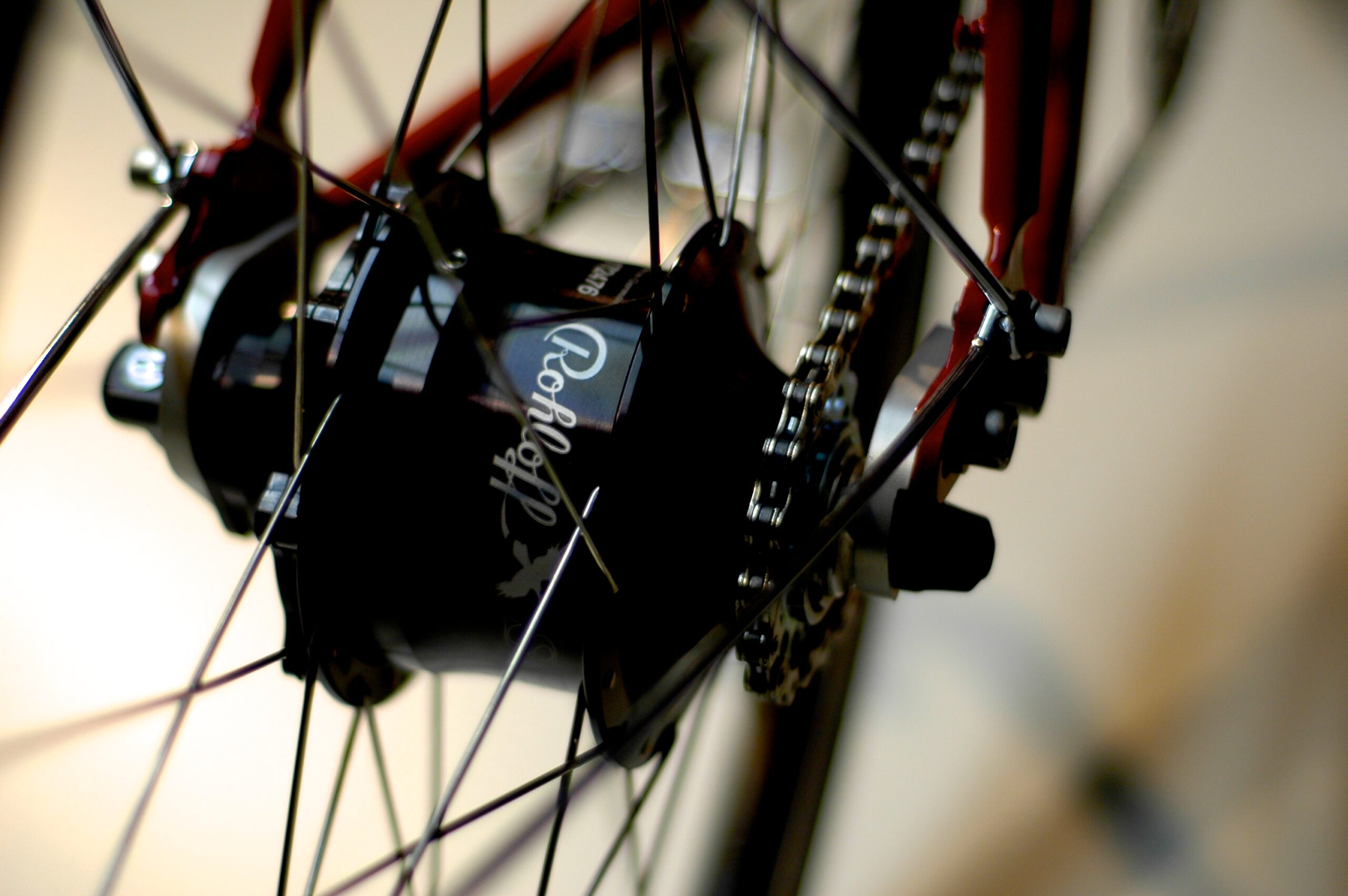This is #5 in an ever-growing series of answers to frequently-asked questions about touring bikes. If you’re new here, why not start with #1: What Exactly Defines A Touring Bike?
There are plenty of people in this world who you could put in a room and let them argue until the end of time about whether or not a touring bike should be fitted with a Rohloff Speedhub.
I am not one of these people. You probably aren’t, either.
If you’re unfamiliar with the Rohloff, it’s a brand of internal gear hub for the rear wheel of a bicycle which costs more than a new entry-level touring bike.
Internal gear hubs like the Rohloff are designed to offer a wide range of gear ratios which are selectable with a single cable-operated handlebar shifter, eliminating all the derailleurs, sprocket cassettes, chainrings, and other gumpf used to offer selectable gear ratios on most other bikes. Competing models include the Alfine range from Shimano, and more recently the Pinion range of crank-mounted gearboxes.

Internet search spirals will unearth no end of people who ‘swear by’ Rohloffs and endless ultra-detailed kit-lists from folk who’ve shelled out the cash to equip their bike with one.
Among arguments often heard in their favour against traditional derailleur setups, they’re more reliable, less messy, simpler on the outside, smoother to use, and you can change gear while stationary.
But they are not essential items of equipment for touring bikes.
People have indeed cycled round the world with Rohloffs. Yet more people have cycled round the world with traditional derailleur gears, having had a century’s head start.
The decision to invest in a Rohloff is not about whether it will will get you through a very long bike trip ‘better’ than a derailleur. As evidenced by the Database of Long Distance Cycling Journeys, or my massive list of worldwide expedition touring bikes, they’ll clearly both do the job.
For me, it’s more a question of the approach you take towards cycle touring, travel, and possibly life in general.
The Real Reason People Choose (Or Don’t Choose) A Rohloff Speedhub
I’ll wager that the single biggest reason for differences in choice relates to how people respond to the fear of things going wrong.
When your non-user-serviceable Rohloff Speedhub breaks (and they do), you send it back to Germany and spend a couple of weeks waiting in whichever city you had to hitch-hike to when it happened. Rohloff repair or replace the hub and send it back to you.
You hope that this happens before a) the locals customs department gets hold of it, and b) your tourist visa runs out.
Eventually, you continue with your tour.
When your derailleur gets mashed into your spokes, you try to fix it yourself, because all the parts are accessible and serviceable, you’ve been on the road for long enough to know how to fix your bike, you’ve got the right tools, and you stopped caring about getting greasy fingers a long time ago.
If you can’t fix it, you remove a few links from your chain and turn your bike into a single-speeder until you get to the next city, where you check into the local hostel to find another cycle tourist awaiting the return of his or her Rohloff hub from Germany. You find a new derailleur or gear hanger or cassette or chain or chainring from any local bike shop.
Eventually, you continue with your tour.
When all’s said and done, the only difference was how the broken gears got fixed – by you, by the nearest bike shop, or by a technician in Kassel-Fuldatal.

The second part of the decision is whether you would prefer the reassurance of a Rohloff or an extra £1,000 towards your bike trip.
What would an extra £1,000 in spending money mean for you?
Consider that there’s no difference between the two systems that will occupy your mind when you’re actually turning the pedals. You’ll have better things to think about. Ultimately, both systems will allow you to choose the right gear when you need to – until, inevitably, something eventually goes wrong.
So if money is no object at this stage of your bike-choice process, the only real way to decide between the two is by rather whimsically thinking about which you like the idea of best.
1. Out of sight, out of mind, out of pocket (sorry) for tens of thousands of miles – until it possibly breaks catastrophically? Rohloff it is.
Or
2. Needing occasional servicing and parts replacement, but fixable on the roadside and by every bicycle mechanic on the planet? Derailleur it is.
Still can’t decide? Flip a coin, cover it up, and then think about which side you really wanted it to land on.
Next in the Touring Bike FAQ series: What’s The Best Way To Avoid Buying The Wrong Bike?


Something to add?